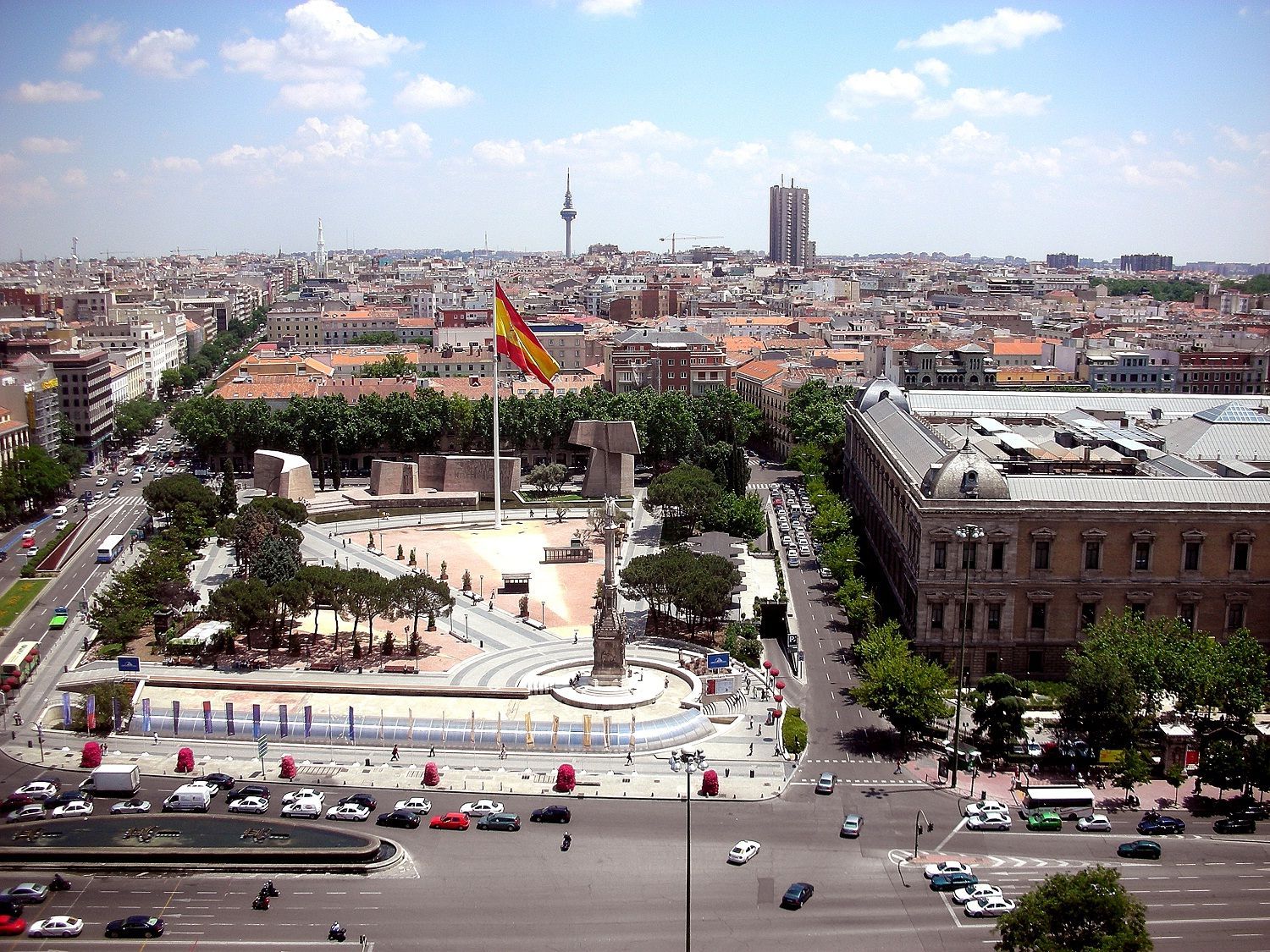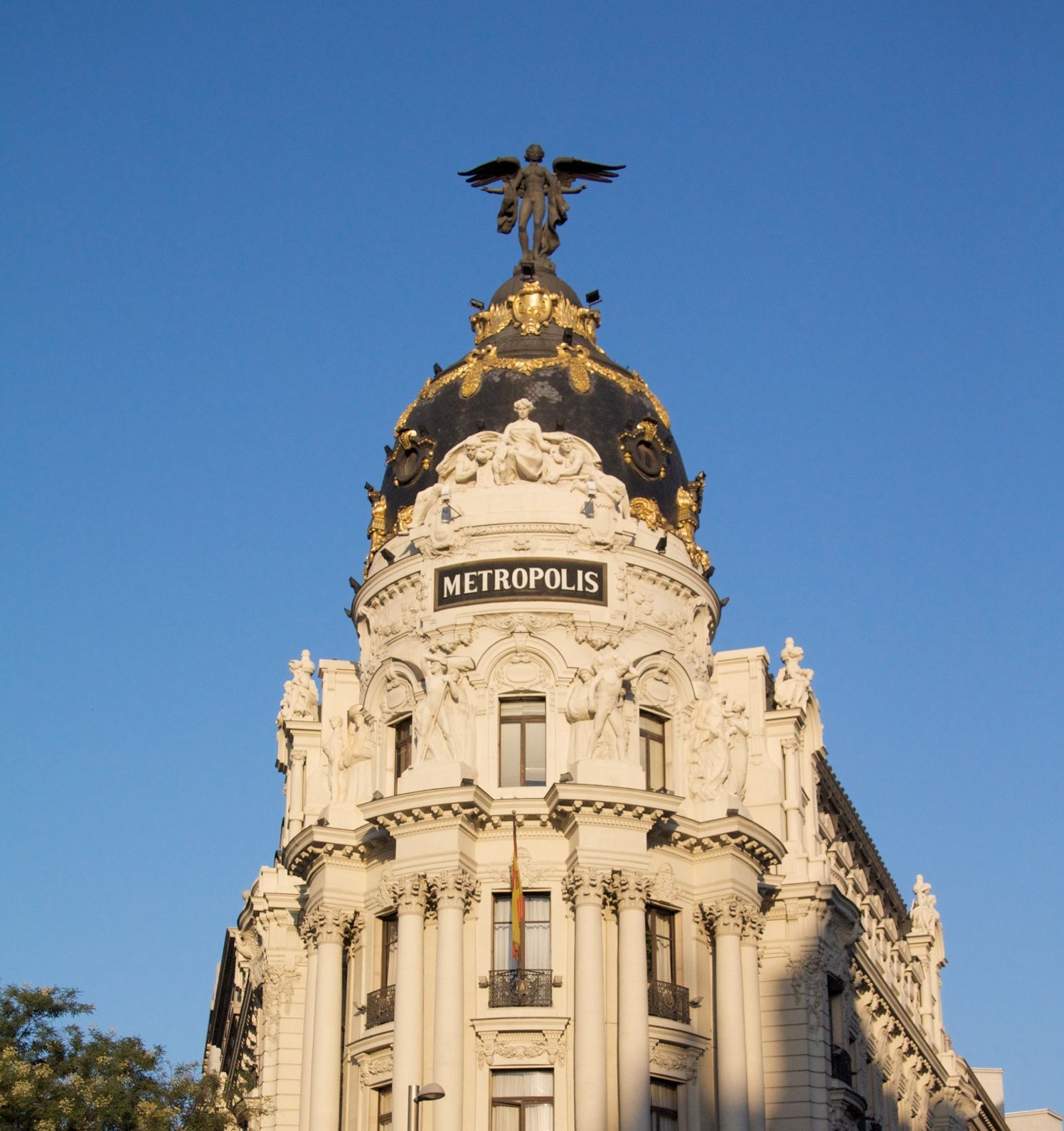Article
Madrid Unplugged
Author(s):
Spain's best-kept secret offers excitement, stunning architecture, and walkable neighborhoods.
Often overshadowed by Barcelona, its perennial rival located in Spain’s northeast Catalonia region, Madrid has plenty to tempt American visitors, whether your interests are cultural or culinary, sightseeing or sports.
Spain has seen its economy sour and unemployment soar, especially in the construction and service industries, and its savings dwindle. But its capital of 3.5 million inhabitants (6.5 million in the metropolitan area) remains a lively, multi-faceted destination studded with handsome squares and diverse architecture—and it’s ready to be explored.
I’ve been to Madrid several times in 30 years. I remember one time a few years ago when French friends, who had recently re-located there, invited my spouse and me to visit. The final evening of our week-long stay happened to be on the occasion of Spain’s win over the Netherlands to clinch soccer’s FIFA World Cup. Hundreds of thousands of exultant fans, many of them draped in the bold yellow and red colors of the Spanish flag surged along the Paseo de Castellana, the broad avenue that starts at Plaza de Colón and seems to go on forever.

Plaza de Colón. Photo by Enrique Dans.
And that was just one part of the action. The news blared from television sets set up in open air bars as well as from rooftops and door stoops, as well as parks and plazas. The ritual of celebration unfolded everywhere.
A group of us were just digging into a starter course of jamon Iberico (Iberico ham) at an outdoor restaurant around about 11 pm on the evening of the game. Our hosts’ furniture, including the TVs, had yet to arrive, so we realized that we would probably miss the action. But food was always an option, even at 11 pm, which is a normal supper hour in a country where, especially in the summer, the light is long in dying. It’s also the country that gave the world good reason for staying up late and at the table, whether drinking cava or rioja, savoring gazpacho or enjoying tapas, paella, and “cocido Madrilleño,” Madrid’s justly praised chickpea stew.
Occupying a space not far from the elegant Plaza de Oriente with its gorgeously illuminated 19th century Royal Palace, the restaurant’s dour maître d’ had harrumphed through taking the order. But he brightened noticeably when cheers erupted from the flat dwellers on the upper floors in the adjacent building, proclaiming Spanish victory.
Fans immediately filled the street, blowing horns, dancing and triumphantly chanting “Viva Espana!” It was that kind of excitement and enthusiasm which constantly thrilled us about Madrid, whether we were on the move, strolling across the usually packed Puerto del Sol in the sharp dry heat and sun of a summer afternoon, or seated at one or other of the ubiquitous outdoor cafés.
People watching, exceptional evenings
As any tourist who has been to Madrid will attest to, a favorite place to people watch is the Plaza Santa Ana fronting the Teatro Español. A wide square filled with, but not overwhelmed by, café tables and chairs as well as bright awnings, it’s possible to sample tapas items, dip a cervesa, and talk late into the night.
Another option is to down a cocktail or 2 at the outdoor Penthouse bar atop the Hotel Reina Victoria that overlooks the square. It’s been voted one of the world’s top 10 rooftop bars and the views you’ll enjoy of Madrid in the evening are exceptional.

Night view of the plaza with the Hotel Reina Victoria in the background.
More than a century old, the Gran Via is a wide bustling thoroughfare that runs from the Calle Alcalá to the Plaza de Espãna. Lined with mid-sized hotels, theaters, stores, and restaurants, it’s not a glamorous stretch, at least when compared with the high-end offerings of the Salamanca district. Instead, Gran Via’s lure is as a showcase for captivating early 20th century architecture. Buildings such as the Metropolis, which went up in 1907 and is topped with a statue of Winged Victory, compete with the Madrid-Paris building of 1920, the 1926 Telefonica (an early skyscraper), and many others. The Gran Via captivates, adding color and texture to the cityscape.

Metropolis Building
Another Madrid architectural treasure we visited reached its 100th year birthday in 2010. The creation of legendary Swiss hotelier César Ritz, who opened the Ritz hotels in Paris and London, the Ritz Madrid is owned and run by Orient Express Hotels. A listed building, the hotel presides over a serene spot directly across from the Prado Museum, one of the world’s greatest, with its rich trove of paintings by Spanish masters such as the Goya, Valasquez, and El Greco, and much else.

The Ritz. Photo by author.
Long enjoying the patronage of the Spanish royal family, the regal Ritz is known for its Old World style and strict standards. For the experience of it, we took ourselves off one morning for breakfast at the Ritz’s beautiful terrace restaurant, which can be accessed separately from the hotel. With a platoon of snappy waiters wearing black trousers and beige jackets, thick white tablecloths, and lush garden surroundings, the restaurant is an oasis in the midst of a big, boisterous city.
Its distinguished character runs deep. The Ritz is where 20 royal delegations, including kings and queens, were accommodated for the 2004 wedding of Felipe, Prince of Asturias and son of Spain’s King Juan Carlos and Queen Sofia, and the stunningly beautiful Letizia Ortiz, now Princess of Asturias.
Right outside the Ritz’s door, you can enjoy one the best walks in town, that along the Paseo del Prado near the Parque del Buen Retiro or Retiro park. The so-called “lungs of the city,” 130-hectare Retiro features a man-made pond, rose garden, and the Chrystal Palace that was constructed in 1887 entirely of glass and steel. A good time to enjoy the Paseo is as early evening announces itself and the sky is soft with light, so different from the often blinding whiteness of the afternoon. The Paseo is the place to see Madrileños, especially older ladies, vastly respectable with their sturdy handbags and proper dresses, conversing intensely as they take their evening constitutional.
Great museums, great sights
Among Madrid’s many museums, the Reina Sofia National Museum and Art Centre, close by the Atocha train station with its glass and steel roof and wrought iron construction dating from the 1890s, is a particularly stellar attraction. Housing premier examples of Spanish contemporary art, the museum’s annex was designed by Jean Nouvel. The noted French architect’s work includes the Institut du Monde Arabe in Paris.
It’s dazzling to behold, as is the Caixa Forum, a power station built in 1899 that’s been transformed by the Swiss architectural firm Herzog & de Meuron into a dynamic arts center that includes galleries, a theater, auditorium, and a restaurant. Located in the old, ideal-for-wandering-through Huertas neighborhood about 5 minutes’ walk from Puerta el Sol, the Caixa Forum has a striking stainless steel staircase that leads from the entrance to the first floor. Covering one wall in the square outside the building is a 79-foot-high garden designed by Parisian artist-botanist Patrick Blanc that contains hundreds of varieties of plants.

Elsewhere, we delighted in seeing many traditional Madrid residential buildings with their beautiful French windows and shutters. Made the capital of Spain in the mid-16th century, Madrid shows its past in apartment buildings, churches, convents, palaces, and public buildings. And of course, squares, the most notable and famous being the Plaza Major, which traces its roots to the early 1600s.
At the other end of the historical spectrum are projects such as the aforementioned Caixa Forum, British architect Richard Rogers’s design of the new Terminal 4 at Barajas International Airport, and Matadero Madrid, a vast contemporary art center that has been carved out of Madrid’s largest and oldest slaughterhouse in the southern part of the city.
Situated north of the downtown, Madrid’s gay area is called Chueca, with its focal point, the Plaza de Chueca. The Barrio Rosa, or Pink Neighborhood, is set between the Paseo de Ricoletos and the Calle de Fuencarral and contains some of the most charming streets in the city, and hip stores such as those on the calles Admirante and Prim. You can easily spend an afternoon in Chueca or any of other central neighborhoods, all of them not far from the Gran Via, easy proximity making the city such a pleasure for those who like to walk.
Time constraints and disinclination meant we didn’t see the bullfights that are so much a part of traditional Spanish culture and take place most evenings in the Las Ventas bull ring. Inaugurated in 1931, the building, with its horseshoe-shaped arches and Puerto Grande, or Big Door, through which triumphant matadors exit, is one of the most famous in the world.
Madrid’s local government has declared bullfighting a protected art form, entitled to the same protections and tax breaks as historic buildings. Meanwhile, Barcelona, the capital’s great rival, banned the practice in 2011. Despite Madrid’s policy on bullfighting, nothing could diminish our enthusiasm for and appreciation of the great Spanish city where we had gathered so many memories and seen so many sights.




